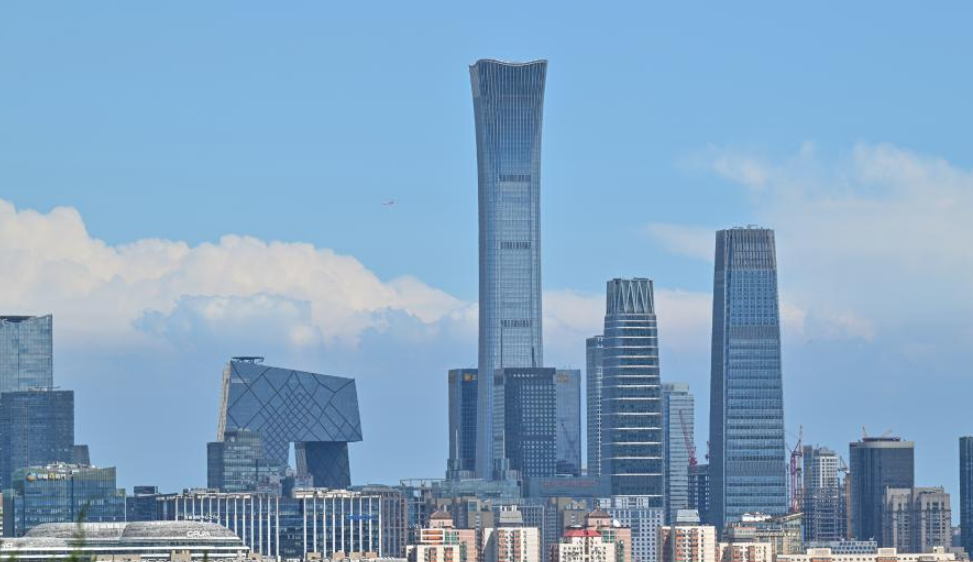China's commercial space industry gets off the ground
BEIJING, Aug. 15 (Xinhua) -- Do you want to have a spectacular panoramic view of the Earth from outer space at an affordable price? This dream seems not far off, as China's mushrooming commercial space companies are making inroads into various sectors, including space tourism.
"The commercial space industry has entered a fast lane in recent years," said Anna Choi, vice manager of Beijing Interstellar Glory Space Technology Ltd., also known as iSpace.
Established in October 2016, this private company has completed a series of successful rocket launches and is beefing up research on reusable rockets, a move designed to dramatically slash costs and improve affordability.
CATFISH EFFECT
The commercial space industry, which is key in nurturing new quality productive forces and a new growth engine, is being given a spotlight with it written into this year's government work report for the first time.
Like the automobile industry, the commercial space industry has a long supply chain that can drive the development of upstream and downstream enterprises, injecting impetus into the country's high-quality development, Choi said.
Considering private space firms an important force in building China into a major space power, Choi said firms like iSpace could have a "catfish effect" -- the belief that a strong competitor can lift the performance of the whole sector.
The past few years have witnessed rapid growth of the country's commercial space industry. The scale of the market jumped from 800 billion yuan (about 113 billion U.S. dollars) in 2019 to 1.9 trillion yuan in 2023, with a compound annual growth rate of 23.3 percent. The market scale is expected to reach 2.34 trillion yuan by the end of 2024, according to an industry report.
The number of registered and effectively operating commercial space enterprises in China had exceeded 400 by the end of 2022, official data showed.
GOLDEN ERA
In 2014, the Chinese government opened up the country's space sector to private investment, with numerous aerospace startups founded shortly afterwards.
"Government support is a strong boost to the industry's development," Choi said, referring to favorable policies, a sound business environment and government subsidies.
Earlier this year, the central government kicked off the issuance of its 1 trillion yuan ultra-long special treasury bonds that have tenors of 20 to 50 years, to raise funds that will be used to support the implementation of national strategies, such as stimulating technological innovation.
Local governments have also been pushing for the growth of the commercial space industry, introducing development policies and establishing industrial parks and bases. China's capital Beijing has handed out commercial space launch insurance premium subsidies for related companies for four years in succession, in a bid to support them in carrying out R&D, manufacturing and launch operations.
Robust market demand is another factor behind the burgeoning commercial space industry. Buoyed by booming demand for satellite communication, satellite navigation and satellite remote sensing applications, China has conducted an increasing number of rocket launches in recent years. In 2023, China carried out 26 commercial launches, up 23.8 percent year on year.
"Given surging market demand and strong government support, I feel that the commercial space industry is currently in a golden era," Choi said with confidence.
BRIGHT PROSPECTS
Despite solid progress in recent years, the domestic commercial space industry is still facing a slew of challenges. The high cost of rocket launches is regarded as one of the barriers that is hindering mankind's large-scale access to space.
Developing recoverable and reusable launch vehicles is key for commercial spaceflight companies both at home and abroad, in their pursuit of the highest input-output ratio.
Choi said iSpace is pooling resources to develop reusable rockets and is expected to realize a major breakthrough next year.
The company is targeting the first flight of its 12.9-tonne low Earth orbit (LEO) Hyperbola-3 rocket in 2025. A demonstration of reuse is set to follow in 2026. The 69.6-meter-long rocket will be able to lift 8.5 tonnes to low Earth orbit when in reusable mode. The company also aims to conduct 25 Hyperbola-3 launches per year by 2030, according to Choi.
Acknowledging that there remains a technology gap between domestic space firms and foreign counterparts, Choi said iSpace aims to emulate the success of SpaceX and catch up with the world's most advanced levels in space technology.
Looking to the future, with the continuous development of the commercial space industry, space technology applications will become increasingly varied and more integrated into people's daily lives.
"I hope increasingly advanced space technology can provide more enriching experiences for the public and better serve their needs. Let's say that space tourism is a dream that will come true," Choi said.
Photos
Related Stories
- Chinese eagerly discuss ‘planting veggies’ on lunar surface following ground-breaking discovery
- China's new-gen manned launch vehicle completes first high-altitude simulation test, paves way for crewed lunar exploration
- China's first commercial space launch site gears up
- Xinjiang scientists discover plant with potential to survive on Mars
- South China's Hainan speeds up layout of aerospace industry
Copyright © 2024 People's Daily Online. All Rights Reserved.









